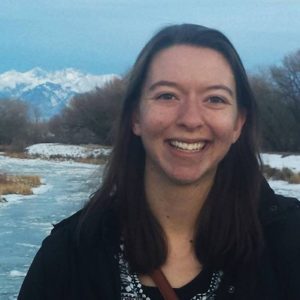 This is the third post in a series highlighting churches across Mennonite Church USA who were awarded the Peace and Justice Support Network’s Spread the Peace grant for 2015. The PJSN is a partnership of Mennonite Mission Network and Mennonite Church USA. Each of these congregations is working in different ways to spread peace in its community.
This is the third post in a series highlighting churches across Mennonite Church USA who were awarded the Peace and Justice Support Network’s Spread the Peace grant for 2015. The PJSN is a partnership of Mennonite Mission Network and Mennonite Church USA. Each of these congregations is working in different ways to spread peace in its community.
Elsa Goossen is serving a two-year term with Mennonite Voluntary Service in Alamosa, Colorado. She grew up in Topeka, Kansas, and graduated from Macalester College in 2015 with a degree in Latin American Studies. She loves mountains, fiddle music, feminism and the quirks of rural living.
On a bright spring day in Denver last month, I sat in a conference room as my head brimmed with the tediousness of a lecture on federal immigration bureaucracy. I had driven four hours north from Alamosa to attend a weeklong legal training for immigrant advocates, and this was only the first day of the promised fire hose of information we would imbibe. We rotated presenters, and the next attorney confirmed our fears.
“Before you enter the world of immigration law,” she quipped, “you have to leave your common sense – and your soul – at the door.”
A few uneasy laughs penetrated the room, but we understood the seriousness of her statement. The dry legal jargon of immigration law may feel draining to new practitioners, but worse, the system’s harsh stipulations and endless categorizations threaten to rob immigrants of their stories and complexities.
I first entered this perplexing legal sphere eight months ago as a Mennonite volunteer at the San Luis Valley Immigrant Resource Center (SLVIRC).
At this small nonprofit, which serves southern Colorado’s sizeable Mexican and Guatemalan immigrant communities, I found co-workers who expertly bridge the gap between the detached jumble of laws and people’s lived experiences. SLVIRC is a safe environment for clients to ask questions and address immigration-related needs on a minimum-fee basis, offering a sliver of dignity amid a dehumanizing system. I am grateful to receive a Spread the Peace grant with the help of the Anabaptist Fellowship of Alamosa that will contribute toward my placement at SLVIRC, where approximately 10 Mennonite volunteers have served over the past 15 years.
Through our legal services program, clients work in partnership with SLVIRC staff to match their life stories with potential immigration remedies.
The human-to-human connections here help mitigate the callousness of the legal process, a system of racial control that spits out “alien registration numbers” and holds immigrants to unreasonable (and often unattainable) standards.
Despite the challenges of working within a flawed and arbitrary system, U.S. immigration policy contains a few bright spots. Our Por Ti Misma program works specifically with undocumented survivors of domestic violence or other crimes, many of whom qualify for immigration relief under the Violence Against Women Act. When people feel trapped between their abusers and the possibility of deportation, these special visas offer a vital legal channel for their safety on both counts.
SLVIRC also offers several educational programs, including English classes for adults, citizenship preparation and after-school tutoring for children from immigrant families. These programs constitute the majority (and perhaps the most meaningful part) of my own work at SLVIRC. In the midst of all the grammar and repetition and furrowed brows, the students and I build rapport with each other. I learn about many things: the working conditions at the local potato farm; where to find the best pan dulce; what it was like to visit Guatemala after 20 years away. Our culture of white supremacy tells me that I should have nothing to do with “those people,” who labor in the fields and homes of the rich before the system quietly renders them deportable, disposable.
But as we continue sharing knowledge, it’s clear that we have everything to do with one another.
We all experience a collective brokenness – albeit in different ways – from the physical, symbolic and psychological walls that divide our communities. In Alamosa, the railroad tracks carve a border through the middle of town, roughly separating residents by race, class and immigration status. I feel incredibly fortunate to take part in blurring this boundary through my work, even in messy and imperfect ways.

